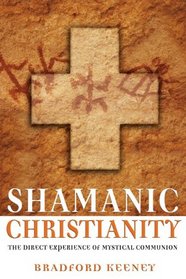I like many of the ideas, lessons, and techniques Keeney offers in this book. I think this book could be a wonderful tool in bringing some people closer to the teachings of the Bible in theory, thought, word, and deed. I think it could also foster a closer connection with Jesus, the saints, the world around them, and God.
For each chapter in part one,titled The Lost Teachings, the author chooses a person, tradition, or topic to cover. Jesus, Mary, St. Francis, and Hildegard of Bingen are four specifically chosen hosts. Traditions adapted for usage in this book include: Celtic myth (fairy/animals), Shakers, and other 'shamanic' tradition adaptions. Topics covered: inner light, using the Holy Bible, loving ones enemy, music, silence, rebirth, and becoming "like a child". Each of these chapters contains 4 sections. The first is "contemplation", which is an introduction to the person, tradition, or topic. Next is the "meditative focus", which is a visualization exercise. This is followed by what the author calls a "Lost Parable" (fictional), where he provides a story to enhance the idea. It ends with an "active mystical practice", where the author provides an activity for the reader.
In part two, titled The Lost Directives, the author provides exercises or practices that one can use to meet challenges of every day of life, including: worry, self-image, anger, sadness, fear, motivation, and more. Some of these may be familiar, such as the use of worry coins or the use of affirmations. Others may be unfamiliar, such as writing Bible verses and placing them in the refrigerator. Many of the things the author suggest trying may range from reasonable to silly. Some are easy, while others are more difficult. I would warn that some of these ideas may be uncomfortable or even unacceptable, depending on the reader's personal ideology.
For each chapter in part one,titled The Lost Teachings, the author chooses a person, tradition, or topic to cover. Jesus, Mary, St. Francis, and Hildegard of Bingen are four specifically chosen hosts. Traditions adapted for usage in this book include: Celtic myth (fairy/animals), Shakers, and other 'shamanic' tradition adaptions. Topics covered: inner light, using the Holy Bible, loving ones enemy, music, silence, rebirth, and becoming "like a child". Each of these chapters contains 4 sections. The first is "contemplation", which is an introduction to the person, tradition, or topic. Next is the "meditative focus", which is a visualization exercise. This is followed by what the author calls a "Lost Parable" (fictional), where he provides a story to enhance the idea. It ends with an "active mystical practice", where the author provides an activity for the reader.
In part two, titled The Lost Directives, the author provides exercises or practices that one can use to meet challenges of every day of life, including: worry, self-image, anger, sadness, fear, motivation, and more. Some of these may be familiar, such as the use of worry coins or the use of affirmations. Others may be unfamiliar, such as writing Bible verses and placing them in the refrigerator. Many of the things the author suggest trying may range from reasonable to silly. Some are easy, while others are more difficult. I would warn that some of these ideas may be uncomfortable or even unacceptable, depending on the reader's personal ideology.




![header=[] body=[Get a free book credit right now by joining the club and listing 5 books you have and are willing to share with other members!] Help icon](/images/question.gif?v=90afaeb39)
